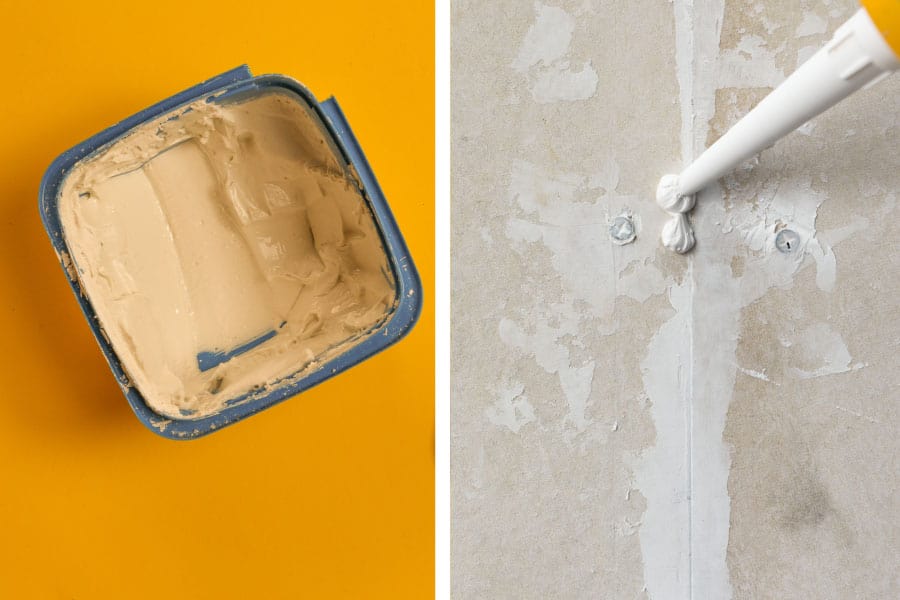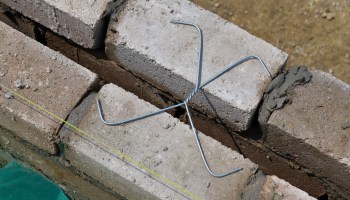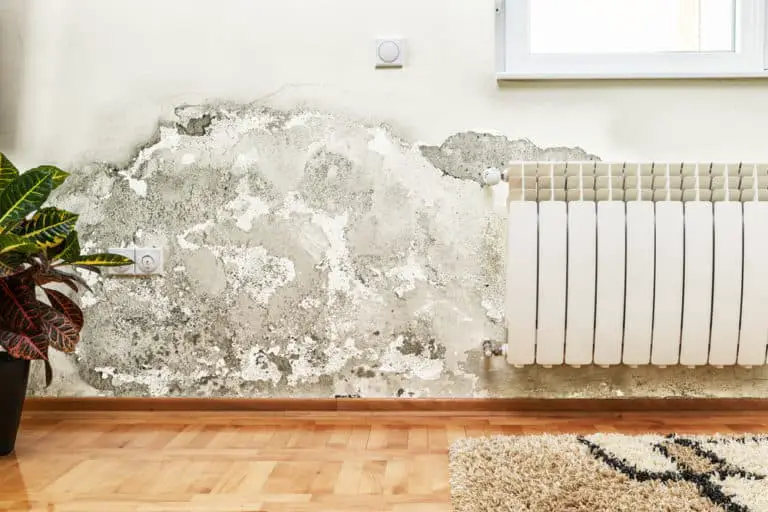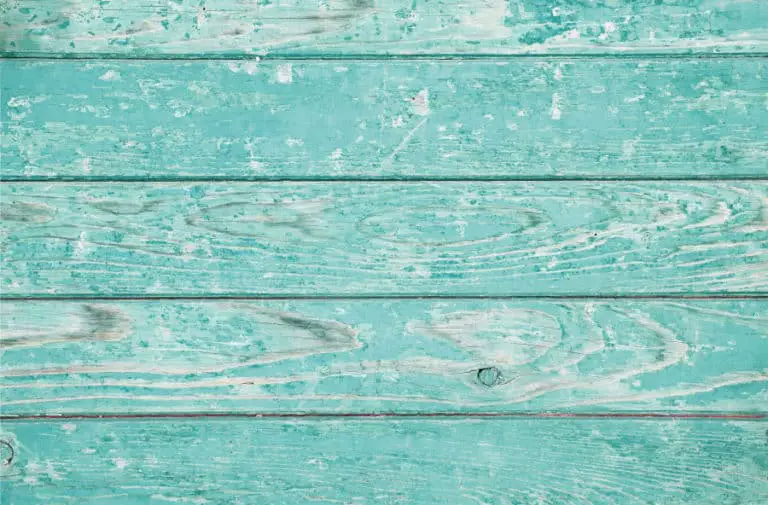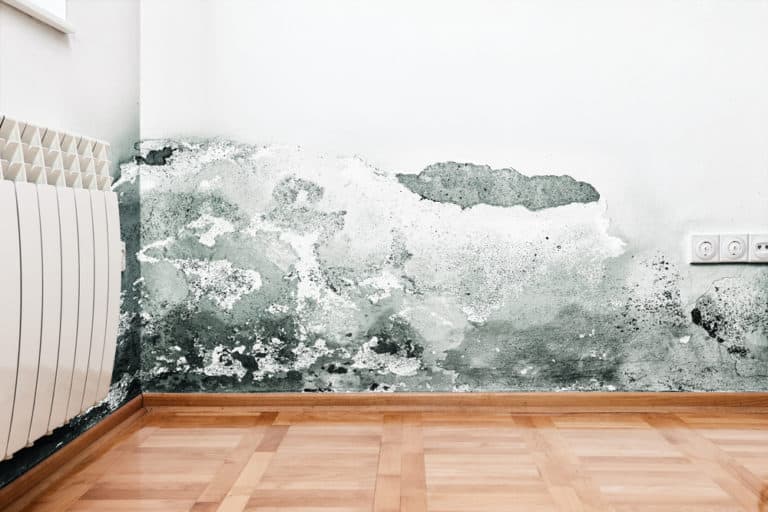Caulk or Wood Filler: What’s Best for Baseboards?
Baseboards are not exactly the hottest topic when it comes to renovation. Most people don’t notice them because they’re not the highlight of a room. You never hear anyone compliment your baseboards. However, if your baseboards are in bad condition, it will stick out like a sore thumb.
Caulk and wood fillers are popular in-house renovations. Homeowners themselves usually do small-scale renovations, and to save money and time, they’d always choose the option that can get everything done.
So the question is which is best for baseboards?
Caulk and wood filler each serve a different function in addressing common problems when it comes to baseboards. It’s best to use caulk when you need to seal something between two objects, which would be either baseboard to wall or baseboard to baseboard. Wood filler is best to use if there are any holes or depressions on the baseboard itself. An example of this would be holes from nails or just a general uneven part on the wood.
In this article, we’ll be going into the differences between caulk and wood filler, when to use them, how to install baseboards, and general renovation tips.
Read more especially if you plan on doing any wood-related renovations anytime soon!
When to use Caulk and when to use wood filler when working with baseboards
Caulk and wood filler has two different functions related to woodworking and baseboards.
Below is a brief summary of why and when to use a caulk or wood filler for your baseboard installation needs.
- It’s best to use caulk when you need to seal something between two objects; in our case, that would be either baseboard to wall or baseboard to baseboard. There will undoubtedly be times during installment that a small gap of a few millimeters will be left, or a mismeasurement will occur. Treat caulk as a means to remedy these types of mistakes.
- It’s best to use wood filler if there are any holes or depressions on the baseboard itself. An example of this would be holes from nails or just a general uneven part on the wood.
What is Caulk?
Caulk is any material that can be used as a sealant, specifically for joints or seams.
The primary purpose of caulk is either to provide protection from water, air, or insects and to fill in any gaps to make the construction appear cleaner.
Caulk is immensely versatile, and it would be hard to find any room in the house that has not applied caulk to seal the room. The water protection, noise reduction, and leakage prevention that caulk provides make it essential for any interior construction project.
There are many different types of Caulk, each with their own different, specific purpose. Read the label of the caulk before using it, as the purpose and specifics will most likely be indicated.
Some caulk types are difficult to work with, and it is difficult in general to clean up caulk if you mess up.
What is Wood filler?
Wood filler is a gel-like substance comprised of wood particles that harden as it dries out. The wood particles are composed of sawdust and are either suspended in water or petroleum.
The main purpose of wood filler is to fill any holes found along with wood, giving wood a flatter finish. The wood filler, as the name implies, fills up the hole and is then sanded down rigorously to match the surface of the rest of the wood. Wood filler can be sanded down because it is mainly comprised of wood.
What is a Baseboard?
A baseboard, as the name suggests, is a wooden board placed on the lower part of the wall to protect the wall from any human actions. A baseboard also conceals the joint between the wall and the floor.
The baseboard can also be referred to as trim, due to its opportunity to be designed to fit into a general style/aesthetic by enhancing the wall’s appearance.
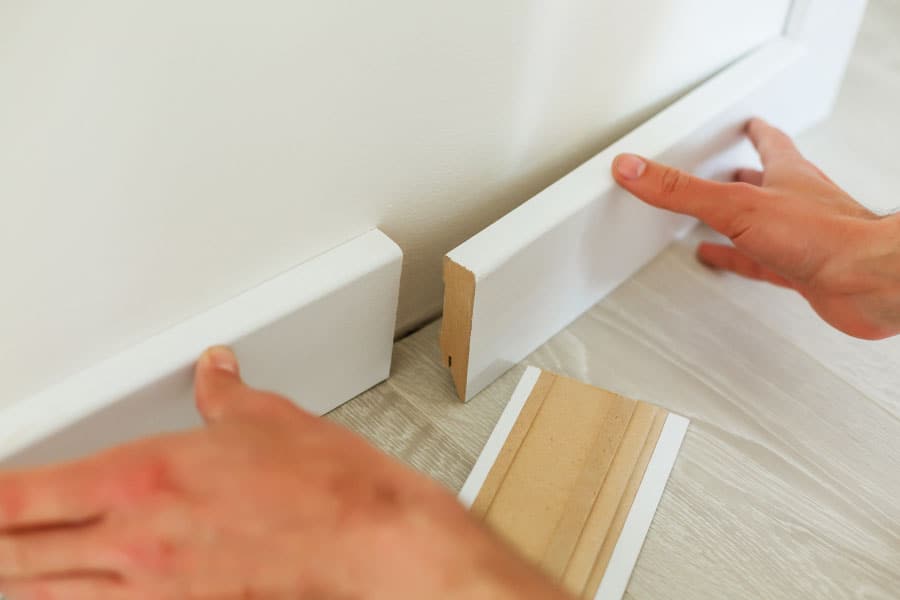
How is a baseboard installed?
The general idea for a baseboard is to cover the joint between a wall and the floor. A painted wooden board would do the trick; however, it’s not that simple.
The usual steps for installing a baseboard would be to:
- Measure the baseboard to the appropriate length.
- Adjust the baseboard with the appropriate finishes (make sure to cut the edges at 45 degrees since corners should always be 90 degrees, this makes two baseboards be able to fit snugly into a corner)
- Apply adhesives
- Nail the baseboards in place. Depending on your wall type, this could be on the studs or anywhere else.
- Tack braces, which is a type of reinforcement to keep the baseboard secured.
- Wait for the baseboard to set overnight.
Considerations when installing baseboard
A house is never constructed perfectly and does not age perfectly. There will be a lot of misalignments and adjustments that you’ll need to take into account when measuring out your baseboards.
For example, a wall finish might be misaligned in such a way that the form of a gap between the baseboard and the wall. If you’re unsure or want to a guarantee, hiring an experienced handyman will help you from any future headaches.
Also, the baseboard should work with the other components in the room. If you have carpets or you wish to install one in the future, leave a thin gap at the bottom of the baseboard that’s big enough for the carpet to enter. This leaves a cleaner finish and easier installation compared to installing a carpet directly against the board.
A word on DIY renovations
DIY renovations are a great way for homeowners to learn more about their houses. It teaches them about the house’s good points, and it’s weaknesses.
It’s not uncommon to hear horror stories about the mishandling of tools, improper usage of materials, incorrect installation methods, etc., which ironically makes the renovation project worsen the house rather than make it better.
Here are some things to keep into account when doing any kind of renovation project:
- Proper research. A good practice is to read extensively about what you plan on doing to your house, the benefits that it adds to your home and your daily life, and the considerations you’ll need to take, such as maintenance, installation, and costs.
NOTE: No matter how many articles you read about how good “X” renovation is for your house, you always need to think about it in the context of your own house. Most likely, you’re already researching about renovations because it stemmed from a need that arose that your current house doesn’t provide or a problem that needs to be addressed.
- Knowing if you can actually do it or not. This is more for those who plan on doing it themselves (DIY). Although nothing can beat the satisfaction of building something with your own two hands, don’t expect that you’ll be able to get the same results unless you have experience in the construction business.
The problem that arises with DIY is that most homeowners have no experience with any construction-related skills. Anyone can hit a golf ball, but golf isn’t just about hitting the ball. The same goes for construction.
Don’t take this too seriously if it’s something as simple as changing a few lights or changing a door. Remember proper research? Renovation largely depends on your current context.
For projects such as changing the entire flooring, wall finish, or installing fixtures, it would be highly suggested to hire someone with experience.
Conclusion
Many construction materials have specific uses to solve specific problems. The construction industry is highly optimized always to achieve the best result; even if a caulk can fill up a hole on a wall, it wouldn’t be the best way to do it.
If you plan on doing any renovations, take into careful consideration what that renovation will do to your house.

